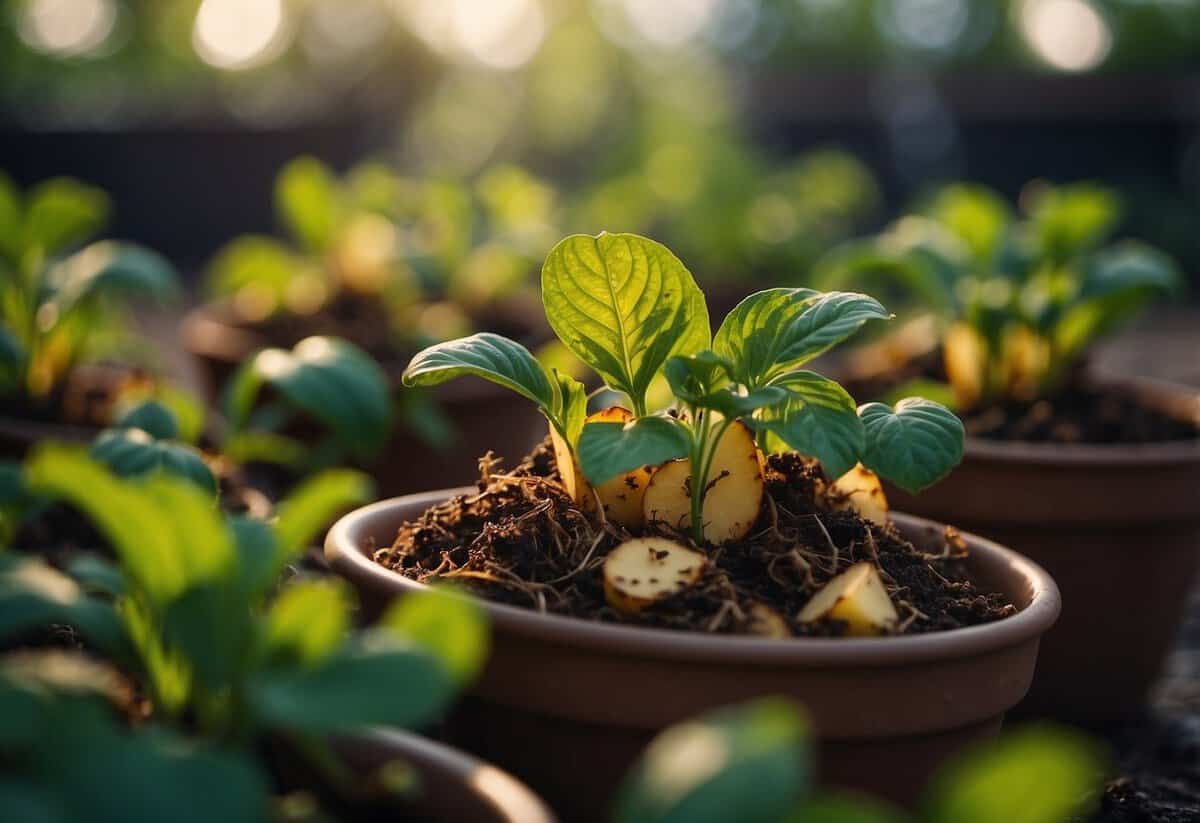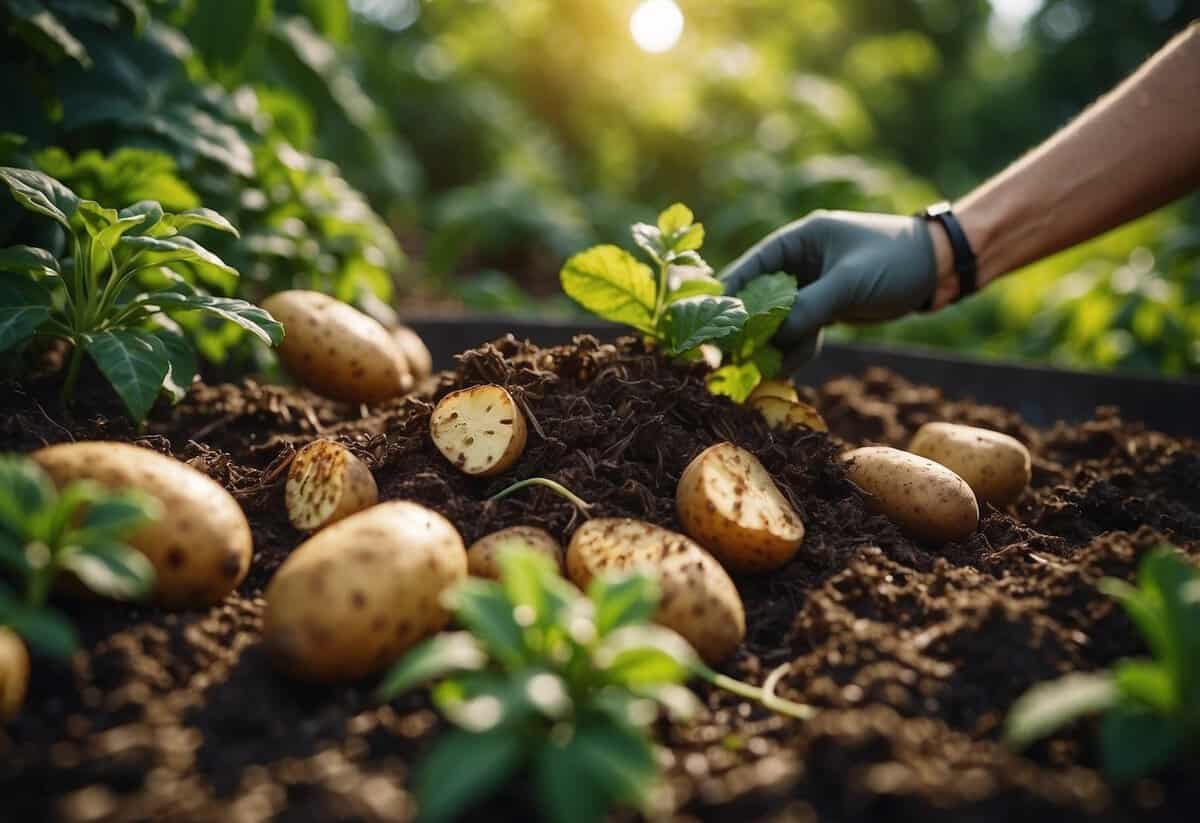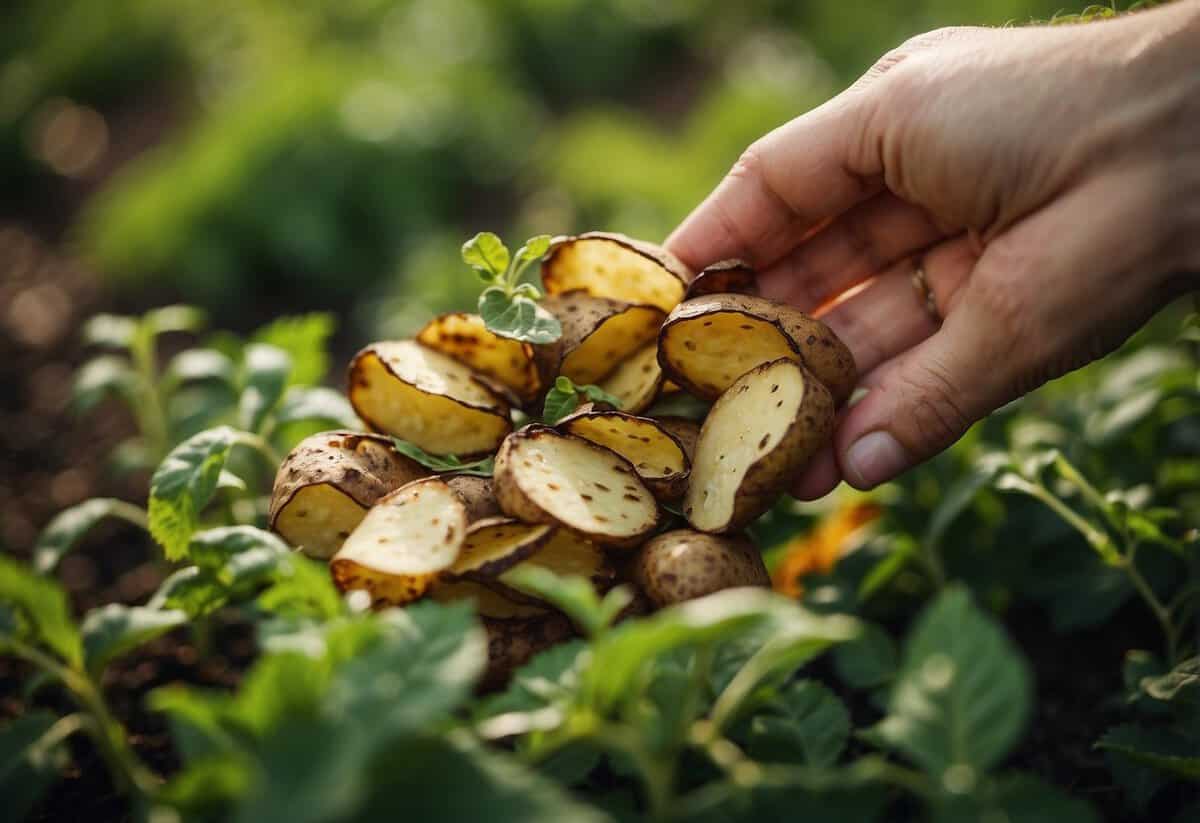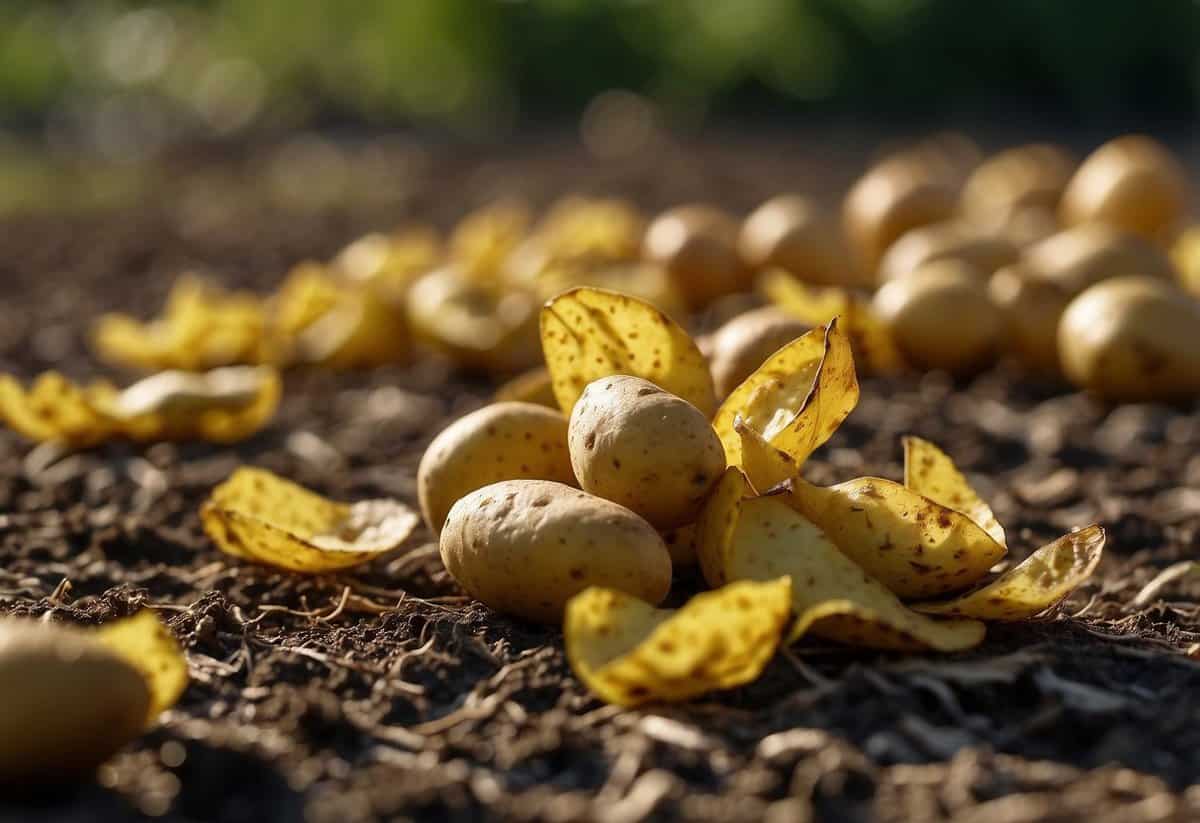Are Potato Peels Good for Plants? Discover the Benefits!
Are potato peels good for your garden? Absolutely! Using potato peels as fertilizer can be a fantastic way to recycle kitchen scraps and provide your plants with essential nutrients. Potato peels are rich in nitrogen, potassium, and phosphorus, which can boost plant growth and enhance soil health.

You can compost potato peels, turning waste into valuable compost that enriches your garden soil. This makes your plants healthier and more robust. Some gardeners even create a potato peel tea by soaking the peels in water, which can be used to water plants directly.
Not only does using potato peels as fertilizer benefit your plants, but it’s also an eco-friendly practice. By reusing these scraps, you reduce waste and promote sustainable gardening. Plus, it’s a cost-effective way to keep your garden thriving without investing in expensive commercial fertilizers.
Benefits of Using Potato Peels in Composting

Potato peels can be a wonderful addition to your compost pile. They are rich in essential nutrients, help enhance soil structure, and attract beneficial organisms.
Richness in Nutrients
Potato peels are loaded with important nutrients. They contain potassium, which helps plants grow strong roots and improves their ability to resist diseases. Potato peels also have nitrogen, an essential element for leaf and stem development.
In addition to potassium and nitrogen, potato peels have phosphorus. Phosphorus is crucial for flower and fruit development. These peels also contain calcium, which helps in forming cell walls in plants.
Small amounts of micronutrients like magnesium and iron can also be found in potato peels. These elements help in overall plant growth, making potato peels a valuable addition to your compost.
Enhancement of Soil Structure
Adding potato peels to compost can significantly improve soil structure. When the peels break down, they become organic matter. This material improves soil texture and drainage.
Organic matter from potato peels can make heavy soils lighter and clay soils less compacted. This improves root growth and water absorption. In sandy soils, the organic matter helps retain moisture and nutrients.
The breakdown process also increases the soil’s ability to hold onto essential nutrients. With better soil structure, your plants will have easier access to water, air, and nutrients, leading to healthier growth.
Attracting Beneficial Organisms
Potato peels can draw beneficial organisms to your compost pile. When decomposing, the peels attract worms and other soil organisms. These creatures break down organic matter faster, making your compost richer and more fertile.
Worms, in particular, are valuable here. They create tunnels that aerate the soil, which helps both the composting process and plant roots. Worm castings, or worm waste, are packed with nutrients that plants easily absorb.
Microorganisms like bacteria and fungi also thrive when potato peels are present. They play a vital role in decomposing organic matter, ultimately making nutrients more available for your plants.
Methods of Composting Potato Peels

Potato peels can be composted using several methods. You can use traditional composting to turn your kitchen scraps into nutrient-rich soil or try vermicomposting, which uses worms to speed up the process.
Traditional Composting Techniques
Traditional composting involves layering organic materials, including potato peels, to create compost. Start by collecting your kitchen scraps like vegetable peels, coffee grounds, and fruit scraps. Potato peels add valuable nutrients to the compost.
To get started, you’ll need a compost bin or a designated area in your yard. Layer the potato peels with other materials like grass clippings (greens) and dead leaves (browns). This helps balance nitrogen and carbon, promoting faster decomposition.
Ensure you keep the compost pile moist and aerate it by turning it regularly. This keeps the process efficient and reduces any odors. Potato peels decompose quickly and enrich the compost with nutrients that make excellent organic fertilizer for your plants.
Vermicomposting with Potato Peels
Vermicomposting uses worms to break down organic materials. This method is efficient, especially if you have limited space. Worms like red wigglers are ideal for this process.
To start vermicomposting, you’ll need a worm bin. Place potato peels along with other kitchen scraps in the bin. The worms will eat these scraps, producing worm castings, which are a rich organic fertilizer.
Ensure the bin has good drainage and is kept moist but not waterlogged. Worms need air, so it’s crucial to have ventilation in your bin. Worms also help by creating tunnels in the compost, which aerates it.
By following these methods, you can turn potato peels and other kitchen scraps into valuable compost for your garden.
Potato Peels as Fertilizer for Different Plants

Using potato peels as fertilizer can benefit a variety of plants by providing essential nutrients. Key practices vary for vegetables, fruits, houseplants, and flowers.
Best Practices for Vegetables and Fruits
Potato peels are great for boosting the growth of vegetables like tomatoes, carrots, and leafy greens. They provide potassium, which is essential for plant health. To use peels effectively, chop them into small pieces and bury them near the plant roots to decompose over time.
You can also make a potato peel tea by soaking peels in water for a few days. This liquid can be used to water your plants, giving them a nutrient boost. This method works well for berries like strawberries and raspberries. Just be careful not to overuse it, as too much can cause plant stress.
For organics, mix dried peels into your compost to enrich the soil naturally. This method is eco-friendly and supports a healthy garden ecosystem.
Potato Peels for Houseplants and Flowers
Potato peels can also be beneficial for houseplants and flowers such as roses. When using peels for houseplants, dry them first to avoid attracting pests. Crush the dried peels into a fine powder and sprinkle them onto the soil. This can provide a slow-release fertilizer that benefits the plants over time.
For flowers, especially nutrient-hungry ones like roses, mix the potato peel powder into the soil at the base of the plants. This will help them absorb potassium and other vital nutrients, promoting vibrant blooms.
Another method is to use potato water, which is made by boiling peels and using the cooled water to hydrate your flowers and houseplants. This can be particularly effective in giving your plants a quick nutrient boost.
Potential Problems and Solutions

Using potato peels as fertilizer can be beneficial, but certain issues like pests and plant diseases can arise. Proper methods can help prevent these problems and keep your garden healthy.
Preventing Pest Infestations
Potato peels can attract pests like insects and slugs. To avoid this, ensure the peels are completely dried before use. Drying kills any eggs or pests present. Spread the peels in a sunny spot for 2-3 days until they are crispy.
Crushing the dried peels into a fine powder or mashing them can help uniformly distribute the nutrients and deter pests. You can mix the powdered peels with soil directly or create a liquid fertilizer by combining peel powder with water.
Using coffee grounds along with potato peels may also help repel slugs. Sprinkling a barrier of coffee grounds around plants creates an unpleasant surface for slugs and other pests.
Avoiding Plant Diseases and Rot
Using potato peels improperly can introduce plant diseases like potato blight. Potato blight can spread through infected peels, causing rot and potentially ruining your entire garden. To prevent this, inspect peels for any discoloration or rot before using them.
If you notice any signs of blight on the peels, it’s safest to discard them. Boiling the peels before use can kill harmful pathogens.
Do not pile peels too densely around plants, as this can create a damp environment that encourages rot and fungal diseases. Instead, mix peels lightly into the soil to ensure good airflow and proper drying. Proper management helps maintain a healthy garden environment.
Sustainable Gardening with Potato Peels

Potato peels are a powerful way to boost your garden while cutting down on kitchen waste. They help to enrich the soil, promote plant health, and reduce overall waste.
Reducing Kitchen and Garden Waste
Using potato peels in your garden is a fantastic method to reduce kitchen waste. Instead of throwing away peels, you can turn them into a rich, natural fertilizer. This not only helps the environment but also saves money on fertilizers.
To start, dry your potato peels by spreading them in a sunny spot for 2-3 days. Once they are dry, crush them into a fine powder. You can use a blender or food processor for this step. Mix the powdered peels with water at a ratio of 1 part peel powder to 10 parts water.
Applying this mixture to your garden enriches the soil with essential nutrients. Many plants, including leafy greens and tubers, benefit greatly from it. In addition, using potato peels helps increase soil moisture and reduces the need for chemical fertilizers, making your gardening practices more sustainable.
By incorporating these practices, you help cut down on food waste and promote healthier plant growth. This approach contributes to a more sustainable lifestyle and a thriving garden.







